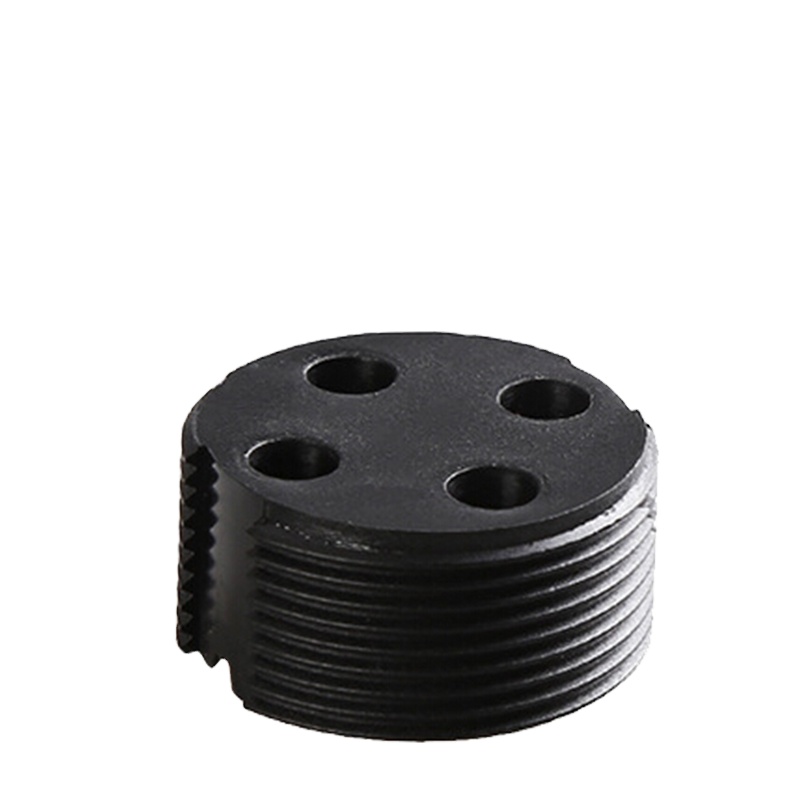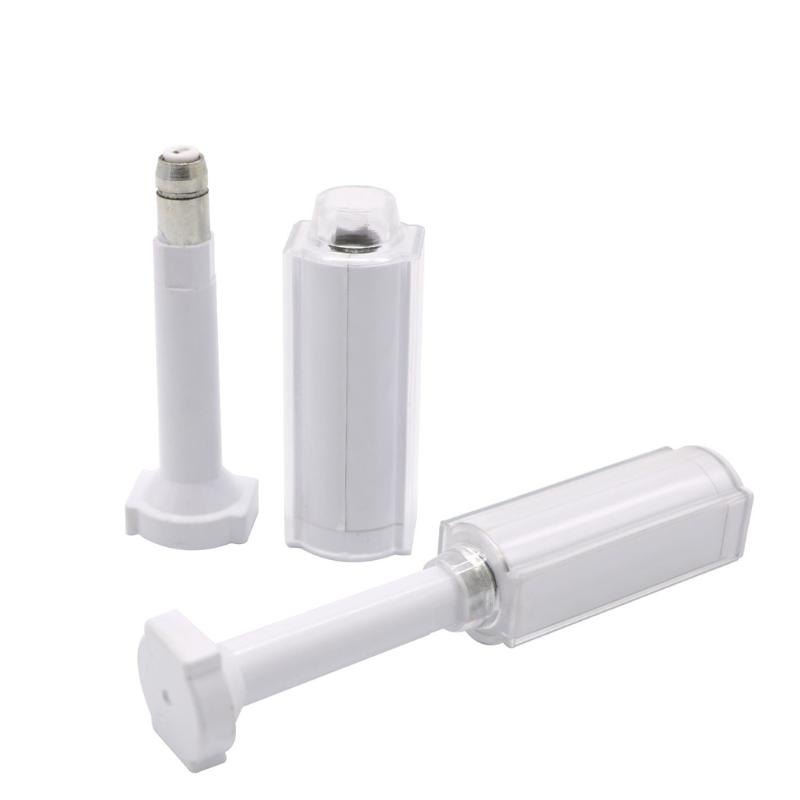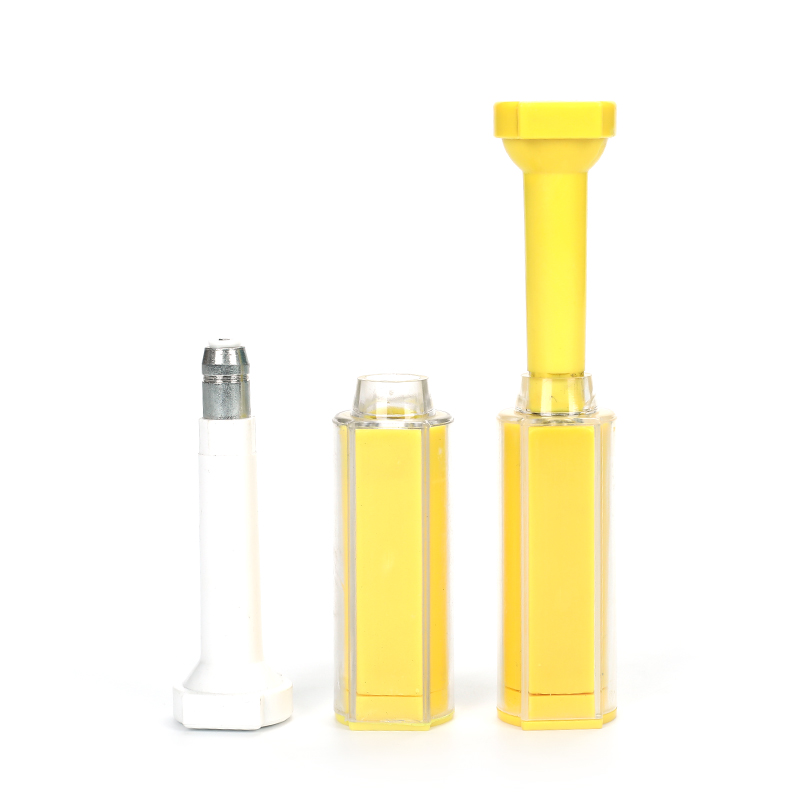
Izvanredne prednosti RFID kartica: revolucija u lancu opskrbe i kontroli pristupa
Sadržaj
Uvod u RFID kartice
RFID kartice—pogonjeni tehnologijom radiofrekvencijske identifikacije—postaju prekretnica u industrijama kao što su maloprodaja, logistika, zdravstvo i sigurnost.
Ali što točno su RFID kartice i zašto su toliko vrijedne? Istražimo kako RFID kartice pružaju značajne poslovne prednosti u kontroli pristupa, učinkovitosti lanca opskrbe i praćenju imovine.
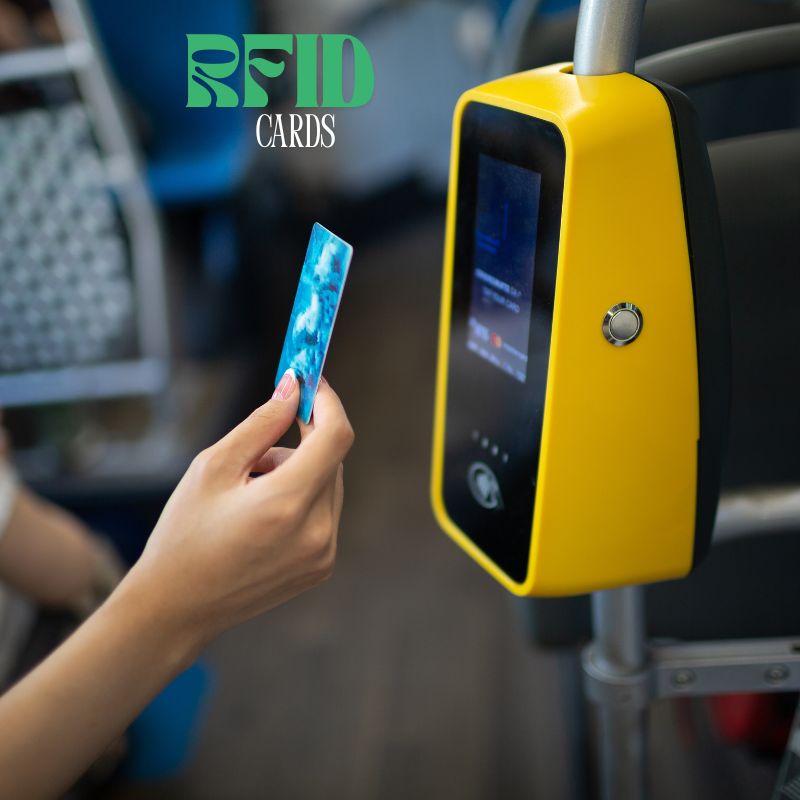
Što je RFID i kako rade RFID kartice?
RFID je kratica za radiofrekvencijsku identifikaciju, tehnologiju koja omogućuje prijenos podataka između oznake (ili transpondera) i čitača pomoću radio valova. To omogućuje bežičnu identifikaciju, autentifikaciju i razmjenu podataka bez izravnog kontakta ili vidne linije – što RFID čini izuzetno moćnim za automatizaciju i praćenje.
Osnove RFID tehnologije
U svojoj srži RFID sustav se sastoji od tri glavne komponente:
1. RFID oznaka/kartica (Transponder):
Ovo sadrži mikročip za pohranu podataka i antenu za primanje i slanje signala.
2.RFID čitač (Istražitelj):
Uređaj koji emitira radio signal za otkrivanje obližnjih oznaka, prima njihove podatke i šalje ih računalu ili softverskom sustavu.
3. Backend softverski sustav:
Integrira se s čitačem za obradu, pohranu i analizu prikupljenih podataka s oznaka (npr. zapisa o pristupu, pomaka zaliha).
Vrste RFID oznaka
Postoje tri frekvencijska pojasa koja se obično koriste u RFID-u:
| Frekvencijski pojas | Opis | Tipični slučajevi upotrebe |
|---|---|---|
| LF (niska frekvencija) 125–134 kHz | Mali raspon čitanja (do 10 cm) Dobro kroz metal/tekućinu | Praćenje stoke, kontrola pristupa |
| HF (visoka frekvencija) 13,56 MHz | Srednji doseg (do 10 cm) Često kompatibilno s NFC-om | Pametne kartice, ulaznice za događaje, bibliotečki sustavi |
| UHF (Ultra visoka frekvencija) 860–960 MHz | Domet dugog dometa (do 10+ metara) Brza brzina čitanja | Logistika, skladišni inventar, maloprodajna oznaka |
Većina RFID kartica radi na 13,56 MHz (HF) i usklađena je sa standardom ISO14443A. Ovaj se standard često koristi za kontrolu pristupa, NFC i sustave tap-to-pay.
Aktivne naspram pasivnih RFID kartica
- Pasivne RFID kartice:
Ove kartice nemaju ugrađenu bateriju. Napajaju se signalom s čitača i najčešće se koriste u kontrolama pristupa, sustavima identifikacije i NFC oznakama. - Aktivne RFID kartice:
Sadrže bateriju koja im omogućuje prijenos signala na veće udaljenosti i pohranu više podataka. Obično se koriste za praćenje imovine visoke vrijednosti ili u sustavima za lociranje u stvarnom vremenu (RTLS).
Poslovne RFID kartice gotovo su uvijek pasivne, isplative i ne zahtijevaju održavanje.
Kako RFID kartice prenose podatke
Evo kako tipična RFID kartica radi korak po korak:
1. Čitač emitira radiofrekvencijsko polje.
2. Kada kartica uđe u ovo polje, njezina antena hvata signal.
3. Čip unutar kartice se aktivira (ako je pasivan) i odgovara slanjem pohranjenih podataka (kao što je jedinstveni ID).
4. Čitač prima i prosljeđuje podatke softverskom sustavu.
5. Na temelju podataka s etikete, sustav odobrava pristup, bilježi unos, ažurira inventar ili pokreće drugi proces.
Sve se ovo događa u milisekundama—bez potrebe za fizičkim kontaktom.
RFID kartice naspram NFC kartica – Koja je razlika?
NFC (Near Field Communication) je podskup RFID tehnologije, temeljen na 13,56 MHz HF RFID-u. No postoje neke razlike:
| Značajka | RFID kartica | NFC kartica |
| Komunikacija | Jednosmjerno (čitač prema oznaci) | Dvosmjerna komunikacija (oznaka i uređaj komuniciraju) |
| Kompatibilnost | Potrebno je RFID čitače | Kompatibilno s većinom pametnih telefona |
| Raspon | Do 10 cm | Do 4 cm (kraće, ali sigurnije) |
| Slučaj upotrebe | Kontrola pristupa, identifikacija, inventar | Mobilna plaćanja, pametni plakati, uparivanje |
NFC RFID kartice su idealne za primjene koje uključuju pametne telefone ili interakciju potrošača.
Uobičajeni formati RFID kartica
RFID kartice dolaze u nekoliko formata kako bi odgovarale različitim okruženjima:
- PVC RFID kartice – standardne veličine poput kreditnih kartica (format CR80)
- Klamarske kartice – deblje i izdržljivije
- Ključne kartice – kompaktne za nošenje na privjescima za ključeve
- Narukvice – popularne za događaje, teretane ili bolnice
- Sticker oznake – mogu biti ugrađene u proizvode, ambalažu ili plakate
JIA RFID nudi sve ove formate s prilagođenim čipovima, mogućnostima tiska i kodiranja.
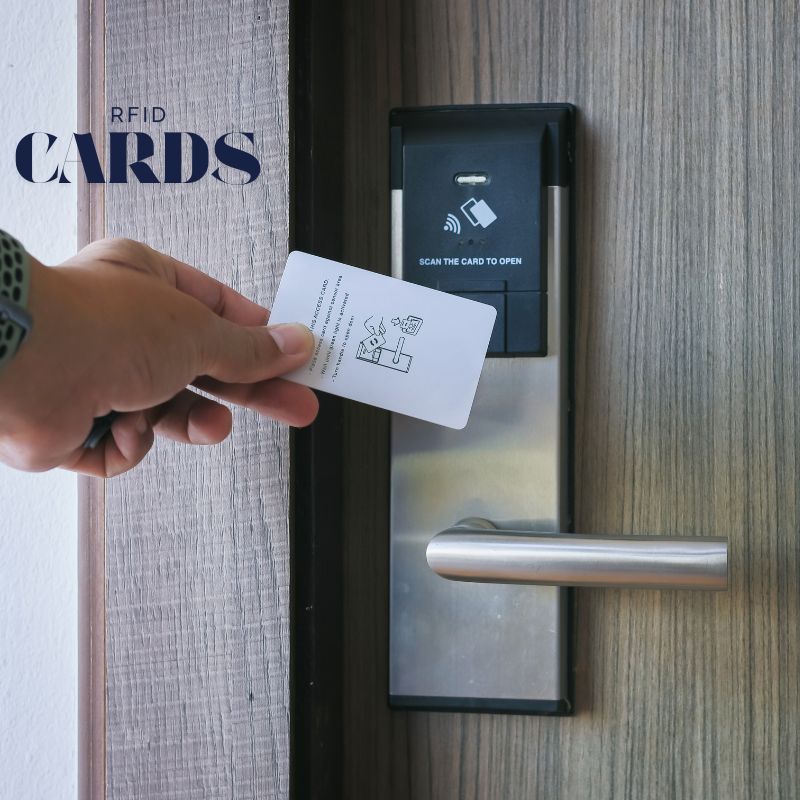
RFID kartice nasuprot tradicionalnim crtičnim kodovima
| Značajka | RFID kartice | Crtični kodovi |
|---|---|---|
| Pročitaj metodu | Bežično, beskontaktno | Potreban vidokrug |
| Pročitaj više stavki | Da, podržano je masovno čitanje. | Jedan po jedan |
| Izdržljivost | Vodootporan, dugotrajan | Sklon izblijedjenju ili oštećenju |
| Kapacitet pohrane | Visoka (može pohraniti dodatne podatke) | Ograničeno na osnovne informacije |
| Ponovno upisiv | Da (mnoge vrste) | Ne |
| Sigurnost | Dostupne su šifrirane opcije | Lako kopirano |
Zaključak: RFID kartice su izdržljivije, sigurnije i svestranije—posebno u okruženjima s velikom razinom automatizacije.
Praktične primjene RFID kartica
RFID kartice se koriste diljem svijeta za optimizaciju poslovanja, poboljšanje sigurnosti, smanjenje troškova i stvaranje besprijekornog korisničkog iskustva. Njihova sposobnost pružanja beskontaktne identifikacije i praćenja u stvarnom vremenu čini ih idealnima za bezbroj industrija.
U nastavku su neke od najutjecajnijih primjena RFID kartica u stvarnom svijetu:
1. Kontrola pristupa u uredima, kampusima i zaštićenim objektima
RFID pristupne kartice široko se koriste za sigurnost zgrada i identifikaciju zaposlenika.
- Kontrola pristupa na vratima: zaposlenici prislanjaju svoju karticu na čitače na vratima za ulazak – nema potrebe za ključevima ili magnetskim čipovanjem.
- Pristup temeljen na ulogama: različite kartične vjerodajnice omogućuju različita prava pristupa (npr. HR, IT, izvršno).
- Praćenje dolazaka i odlazaka: Automatski bilježi vrijeme prijave i odjave zaposlenika.
- Integracija: Može se povezati s pisačima, dizalima, automatima za prodaju i čak s autentifikacijom za pristup mreži.
RFID kartice zamjenjuju tradicionalne ključeve i kartice s rupicama centraliziranim, sigurnim i skalabilnim rješenjem.
2. Inventarizacija i upravljanje imovinom u skladištenju i logistici
RFID kartice i etikete omogućuju trenutačno, precizno i automatizirano praćenje robe i opreme.
- Identifikacija paleta i kontejnera
- Ažuriranja zaliha u stvarnom vremenu tijekom dolaznih/odlaznih skeniranja
- Cikličko brojanje i revizije dovršavaju se u djeliću vremena.
- Posuđivanje alata/opreme putem RFID-sustava za prijavu
- Globalno praćenje pomoću EPC-kompatibilnih RFID oznaka i oblačnih sustava
- RFID smanjuje gubitke, eliminira pogreške pri ručnom unosu i ubrzava inventarne procese.
3. Sigurnost pacijenata i pristup osoblja u zdravstvu
RFID kartice poboljšavaju sigurnost, sljedivost i usklađenost u bolnicama i klinikama.
- Osobne iskaznice osoblja s pristupom prostorijama i praćenjem aktivnosti
- Osigurajte pristup pohrani lijekova i kontroliranih tvari
- Narukvice za pacijente ili kartice s povezanim medicinskim poviješću
- Obilazak medicinske sestre i lociranje imovine s bilježenjem događaja s vremenskim žigom
- Praćenje poštivanja higijenskih propisa s beskontaktnim pristupom umivaonicima/prostorijama
RFID poboljšava sigurnost pacijenata i operativnu odgovornost u okruženjima visokog rizika.
4. Maloprodaja i angažman kupaca
Trgovci na malo koriste RFID kartice za beskontaktne transakcije, programe vjernosti i upravljanje zalihama.
- Članarske kartice s integriranim bodovima vjernosti
- Praćenje kupaca u trgovini za analizu ponašanja
- Proizvodi označeni RFID etiketama za pametne police i automatizirano naručivanje
- Promocije tap-to-pay i tap-to-access
- Samoposlužni blagajni s košarama ili kolicima označenim RFID-etiketama
RFID poboljšava korisničko iskustvo, istovremeno smanjujući gubitke i optimizirajući zalihe.
5. Pametne knjižnice i obrazovne ustanove
U školama i knjižnicama RFID omogućuje brzu identifikaciju i zaštitu od krađe.
- Izdavanje knjižnične iskaznice za beskontaktno posuđivanje
- Automatske stanice za prijavu i odjavu
- Studentske iskaznice za kantinu, pristup autobusu i prisustvo
- Zaštićen pristup laboratoriju/opremi pomoću pametnih iskaznica za studente ili osoblje
RFID omogućuje učinkovita i odgovorna okruženja za učenje od osnovnih i srednjih škola do sveučilišta.
6. Parkiranje, prijevoz i pristup vozilima
RFID kartice zamjenjuju ulaznice i privjeske za ključeve u modernim sustavima mobilnosti i prijevoza.
- Pristup parkiranju bez upotrebe ruku za osoblje ili pretplatnike
- Kartice za vožnju tap-to-ride u sustavima metroa i autobusa (npr. MIFARE kartice)
- Upravljanje voznim parkom pomoću RFID uparivanja oznake vozila i vozača
- Kontrola pristupa logističkom dvorištu bez osoblja na kapiji
RFID ubrzava kretanje vozila, istovremeno povećavajući kontrolu pristupa i vidljivost podataka.
7. Hoteli, događaji i zabavni sadržaji
RFID narukvice i kartice poboljšavaju iskustvo gostiju, sigurnost i potrošnju.
- Hotelske kartice za sobu s mogućnošću prijave putem mobilnog uređaja
- Pristupne iskaznice za događaj s personaliziranim rasporedima
- Pojasovi za beskontaktno plaćanje za festivale, parkove i odmarališta
- Pristup ograničenom području za osoblje ili VIP sudionike
- Podaci nakon događaja o ponašanju sudionika i popularnosti zona
RFID čini događaje velikih razmjera i ugostiteljske operacije pametnijima, bržima i ugodnijima.
8. Vlada i javne usluge
Vlade usvajaju RFID za sigurne, učinkovite usluge usmjerene prema javnosti.
- RFID-om omogućene nacionalne osobne iskaznice
- RFID registracija vozila i naplata cestarina
- Sigurnost granice i provjera putovnica
- Kontrolirani pristup općinskim zgradama ili biračkim kutijama
RFID povećava sigurnost, ubrzava provjeru i smanjuje prijevare u javnoj upravi.
9. Industrijska proizvodnja i kontrola kvalitete
RFID kartice se koriste u tvornicama i proizvodnim linijama kako bi se osigurala sljedivost i usklađenost.
- Autentifikacija operatera na strojevima
- Praćenje životnog ciklusa proizvoda od sirovina do otpreme
- Status kontrole kvalitete i zapisi inspekcije povezani s označenim proizvodima
- Praćenje alata i dijelova tijekom izrade i održavanja
RFID pomaže proizvođačima učinkovito ispuniti zahtjeve usklađenosti s ISO-om, FDA-om ili automobilskom industrijom.
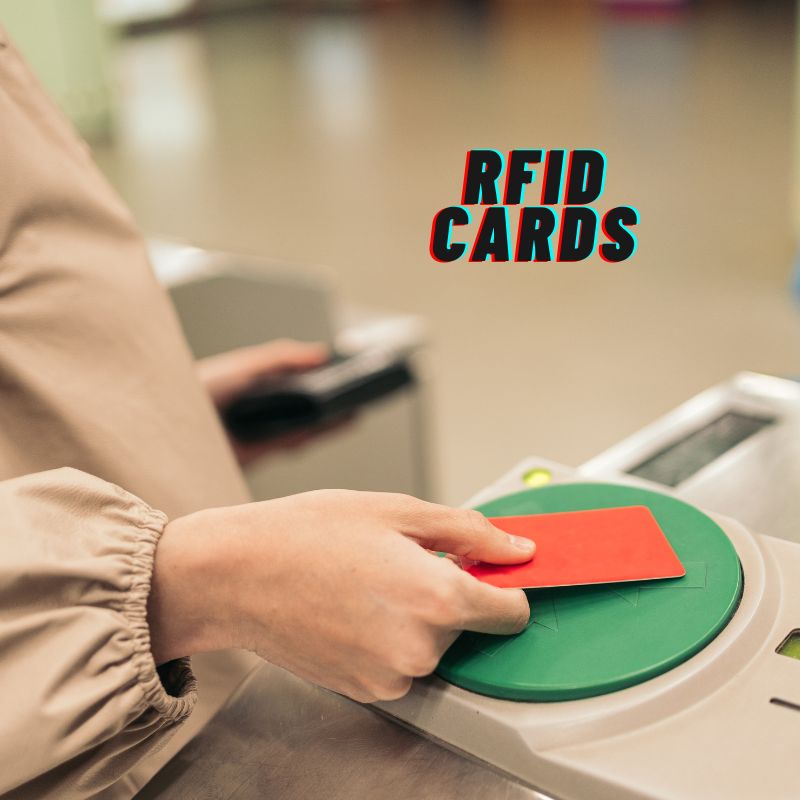
Izazovi RFID kartica (i kako ih prevladati)
Iako RFID kartice nude impresivne prednosti, njihova implementacija donosi izazove koji utječu na performanse, troškove i prihvaćanje od strane korisnika—posebno ako se ne riješe na vrijeme. Dobra vijest? Većina tih problema je predvidljiva i rješiva uz pravu strategiju i dobavljača.
Istražimo najčešće izazove RFID-a i kako ih prevladati.
1. Početni troškovi postavljanja
Izazov:
RFID sustavi obično zahtijevaju ulaganje u čitače, softver, infrastrukturu i same RFID kartice ili oznake. To može biti preopterećujuće za mala poduzeća ili timove koji nisu upoznati s tom tehnologijom.
rješenja:
- Započnite pilot-programom kako biste potvrdili povrat ulaganja i učinkovitost u kontroliranom okruženju.
- Odaberite dobavljače koji nude besplatne uzorke, niske minimalne količine narudžbe (MOQ) i modularni hardver.
- Uzmite u obzir dugoročne uštede: smanjeni troškovi rada, smanjenje gubitka zaliha i brži tijekovi rada često brzo nadoknađuju početne troškove.
Savjet: Uspostavite partnerstvo s dobavljačem RFID rješenja koji može rasti zajedno s vama tijekom vremena.
2. Ometač čitatelja i točnost čitanja
Izazov:
Metalne površine, tekućine, gusti materijali ili gusto okruženje s etiketama mogu ometati jačinu RFID signala—posebno kod UHF i HF sustava.
rješenja:
- Koristite RFID kartice ili oznake otporne na metal s feritnom podlogom ako ih montirate u blizini metala.
- Odaberite specijalizirane formate etiketa za visoko vlažna ili kemijska okruženja.
- Optimizirajte postavljanje čitača i konfigurirajte snagu/izlaz čitača za vaš slučaj upotrebe.
- Redovito testirajte zone čitanja kako biste osigurali dosljednost, osobito u mobilnim ili dinamičnim okruženjima.
Precizna očitanja = bolji podaci i manje pogrešaka u kasnijim fazama.
3. Zabrinutosti u vezi s privatnošću i sigurnošću podataka
Izazov:
Neka poduzeća se boje neovlaštenog skeniranja ili kloniranja RFID iskaznica – osobito u aplikacijama za kontrolu pristupa ili plaćanje.
rješenja:
- Koristite šifrirane RFID kartice (npr. MIFARE DESFire EV2) s naprednim protokolima autentifikacije.
- Odaberite jedinstvene UID-ove i onemogućite nepotrebne blokove memorije.
- Zaštitite osjetljiva okruženja RFID-blokirajućim kućištima ili kontroliranim pristupnim zonama.
- Redovito ažurirajte sustave kako biste zakrpali ranjivosti i rotirajte pristupne vjerodajnice.
RFID sustavi mogu biti još sigurniji od kartica s crtičnim kodom ili magnetskom trakom uz pravilno postavljanje kartice i čitača.
4. Integracija s postojećim sustavima
Izazov:
Neki naslijeđeni sustavi ili platforme trećih strana možda neće podržavati moderne formate RFID podataka ili sinkronizaciju u stvarnom vremenu.
rješenja:
- Surađujte s dobavljačima RFID-a koji nude podršku za API ili alate za integraciju middlewarea.
- Provjerite može li vaš dobavljač softvera prihvatiti podatke EPC, UID ili prilagođena polja.
- Koristite CSV/XML izvoze ili middleware alate kao most tijekom prijelaznih razdoblja.
- Odaberite čitače koji podržavaju više protokola (Wiegand, TCP/IP, RS232) radi lakše integracije.
Dobro integrirani RFID sustav pokreće automatizaciju, a ne IT glavobolje.
5. Obuka korisnika i usvajanje
Izazov:
Osoblje možda nije upoznato s upotrebom RFID-a ili je otporno na usvajanje novih radnih procesa, osobito ako im se tehnologija čini složenom ili nametljivom.
rješenja:
- Ponudite kratke trening sesije ili “cheat listice” s vizualima.
- Koristite videozapise ili korak-po-korak demonstracije kako biste objasnili prednosti sustava i način njegove upotrebe.
- Imenujte interne RFID šampione za pomoć i prikupljanje povratnih informacija.
- Podijelite rane uspjehe i kvantificirane uštede vremena kako biste pokazali vrijednost.
Ljudi prihvaćaju ono što razumiju i što im olakšava posao.
6. Zabrinutost zbog trajnosti u surovim okruženjima
Izazov:
Ovisno o primjeni, standardne RFID kartice mogu se oštetiti pri izloženosti ekstremnoj vrućini, hladnoći, vlazi ili habanju.
rješenja:
- Za ekstremna okruženja koristite robusne kućišta RFID kartica (npr. od ABS-a, epoksidno zapečaćena ili enkapsulirana oznake).
- Odaberite materijale otporne na toplinu i UV zračenje za vanjsku upotrebu.
- Razmotrite zaštitne držače ili kartične štitnike za područja s intenzivnom upotrebom.
- Konsultirajte se s dobavljačima o kompatibilnosti materijala oznaka s uvjetima na vašoj lokaciji.
Prilagođeni format RFID kartice može produžiti vijek trajanja oznake za godine.
7. Signalna zagušenost u okruženjima visoke gustoće
Izazov:
U područjima s mnogo RFID oznaka (npr. skladišta, događaji), oznake se mogu međusobno čitati ili biti pogrešno identificirane.
rješenja:
- Omogućite protokole za sprječavanje sudara u svojim RFID čitačima.
- Postavite specifične zone skeniranja i cikluse čitanja na temelju obrazaca kretanja.
- Koristite jedinstvene EPC-ove i pametne algoritme filtriranja kako biste uklonili lažno pozitivne rezultate.
- Odaberite čitače visokih performansi sposobne za brzo filtriranje oznaka.
Učinkovit promet = učinkovito skeniranje.
Budućnost RFID tehnologije
RFID je prešao dug put od osnovne kontrole pristupa i upravljanja zalihama. Kako se industrije kreću prema automatizaciji, digitalizaciji i pametnoj infrastrukturi, RFID je spreman odigrati središnju ulogu u sljedećem valu inovacija.
Od integracije s IoT-om i AI-jem do održivosti i miniaturizacije, budućnost RFID-a obećava preoblikovati način na koji pratimo, komuniciramo i donosimo odluke u stvarnom vremenu.
Istražimo kako bi sljedećih 5–10 godina RFID tehnologije moglo izgledati:
1. Integracija s Internetom stvari (IoT)
Kako se IoT ekosustavi šire, RFID oznake postat će ključni omogućivači komunikacije objekata u stvarnom vremenu.
- Pametne police i ormarići automatski će otkriti inventar označen RFID oznakama.
- Strojevi i imovina automatski će prijavljivati status, korištenje i potrebe za održavanjem.
- Industrijski senzori će kombinirati RFID podatke s očitanjima temperature, tlaka ili vlažnosti.
- Doživljaji u maloprodaji postat će interaktivni—proizvodi “govore” putem RFID/NFC-a za dinamički sadržaj
- RFID pretvara statične predmete u povezanu, inteligentnu imovinu.
2. RFID + umjetna inteligencija (UI) za prediktivnu analitiku
Kombiniranje RFID-a s umjetnom inteligencijom stvorit će sustave koji prate imovinu i predviđaju ishode.
- Predviđanja zaliha u stvarnom vremenu (obavijesti o dopuni zaliha, trendovi potražnje)
- Pametno usmjeravanje logistike na temelju lokacija imovine
- Prediktivno održavanje opreme praćene RFID-om
- Optimizacija temeljena na ponašanju u maloprodaji, skladištenju i transportu
- RFID će pokretati motore za donošenje odluka koji se prilagođavaju i uče tijekom vremena.
3. RFID omogućen blockchainom za autentifikaciju i sljedivost
RFID i blockchain tehnologija snažna su kombinacija za industrije kojima je potrebna neuništiva transparentnost.
- Validacija lanca opskrbe—zabilježite svaki pomak označenog proizvoda
- Usljedivost hrane od farme do stola
- Autentičnost luksuzne robe i farmaceutskih proizvoda
- Primjene protiv krivotvorenja u elektronici i zrakoplovstvu i svemirstvu
- Blockchain + RFID osiguravaju nepromjenjivost podataka i povjerenje, čak i preko kontinenata.
4. Miniaturizacija i fleksibilan dizajn oznake
Sutrašnje RFID oznake bit će manje, tanje i svestranije – moguće ih je ugrađivati gotovo u sve.
- Izuzetno tanke umetke za pakiranje proizvoda
- Etikete integrirane u tekstil, prišivene na odjeću i uniforme
- Minijaturne NFC naljepnice za marketing, AR i mobilnu interaktivnost
- Medicinski senzori ugrađeni u nosive uređaje za pacijente
- Ove inovacije otvaraju vrata za RFID u nosivim uređajima, biotehnologiji i pametnom pakiranju.
5. Prikupljanje energije i samopogonjeni RFID
Novi RFID oznake mogu prikupljati energiju iz svoje okoline kako bi proširile svoje funkcionalnosti.
- Pasivne oznake potpomognute baterijom (BAP) s većim dometom
- RFID senzori potpomognuti solarnom energijom za praćenje na otvorenom
- Senzori okoliša napajani ambijentalnom energijom
- Edge računalstvo RFID oznaka koje obrađuju i prenose više podataka uz manje energije
- Budućnost je samoodrživi RFID, koji smanjuje potrebu za zamjenom baterija ili napajanjem putem kabela.
6. Zelena RFID i održivi materijali
Pod globalnim pritiskom na održivost, proizvođači RFID-a sada se usredotočuju na:
- Ekološki prihvatljivi podlozi za etikete izrađeni od papira ili bioplastike
- Reciklabilne antene koje koriste vodljivu tintu umjesto metala
- Jednokratne RFID oznake za jednokratnu upotrebu u logistici ili kao ulaznice za događaje
- Perive RFID oznake s dužim životnim ciklusom u tekstilnim primjenama
- RFID inovacija bit će usklađena s ESG ciljevima i usklađenošću s propisima o zaštiti okoliša.
7. Veća dostupnost i standardizacija
RFID sustavi postaju:
- Pristupačnije, čak i za mala poduzeća i startupe
- Kompatibilno s POS, ERP, WMS i mobilnim aplikacijama – priključi i radi
- Globalno interoperabilan, sa zajedničkim standardima frekvencija i podataka
- Lakše za implementaciju s web-dashboardima i postavkom bez koda
- Kako padaju prepreke ulasku, usvajanje RFID-a će se ubrzati u industrijama i preko granica.

Je li RFID pravi izbor za vaše poslovanje?
Razmotrite RFID ako:
- Potreba za poboljšanjem točnosti zaliha ili praćenja imovine
- Upravljajte predmetima visoke vrijednosti ili osiguranim objektima
- Želite smanjiti ručni rad i ljudske pogreške
- Želite digitalizirati radne procese i skalirati svoje poslovanje
Suština: RFID pruža snažan povrat ulaganja kada se upari s pravom primjenom — a mi smo tu da vam pomognemo pronaći tu usklađenost.
Jeste li spremni prijeći na RFID kartice?
🔐 Želite li modernizirati svoj sustav kontrole pristupa ili inventarizacije?
📩 Zatražite besplatni uzorak ili ponudu po mjeri
📱 Ili nam pošaljite poruku na WhatsAppu: +86 138 2318 6864
Pružamo:
- OEM brendiranje i enkodiranje čipova
- Prilagođene veličine i materijali
- Veleprodajno određivanje cijena za globalne klijente
- Stručno savjetovanje i brza dostava
ČPP – RFID kartice za poslovanje
Rade li RFID kartice sa svim sustavima za kontrolu pristupa?
Vjerojatno ćemo ponuditi kartice kompatibilne sa standardima ISO 14443A / 15693, koje koriste većina globalnih sustava.
Mogu li RFID kartice pohranjivati korisničke podatke?
Da. Ovisno o čipu, kartice mogu pohraniti korisnički ID, stanje, vremenske oznake, pa čak i šifrirane ključeve.
Jesu li RFID kartice vodootporne i izdržljive?
Naše su kartice zapečaćene u PVC-u, PET-u ili ABS-u, što ih čini vodootpornima, otpornima na ogrebotine i dugotrajnima.
Koja je razlika između HF i UHF RFID kartica?
HF (13,56 MHz): Idealno za siguran pristup, s podrškom za NFC
UHF (860–960 MHz): Bolje za praćenje na velikim udaljenostima (npr. paletama u skladištu)

Ray Zhou
Ovaj je članak napisao Ray Zhou, stručnjak za RFID tehnologiju s više od 10 godina iskustva u industriji.
Komentari
Vrući proizvodi
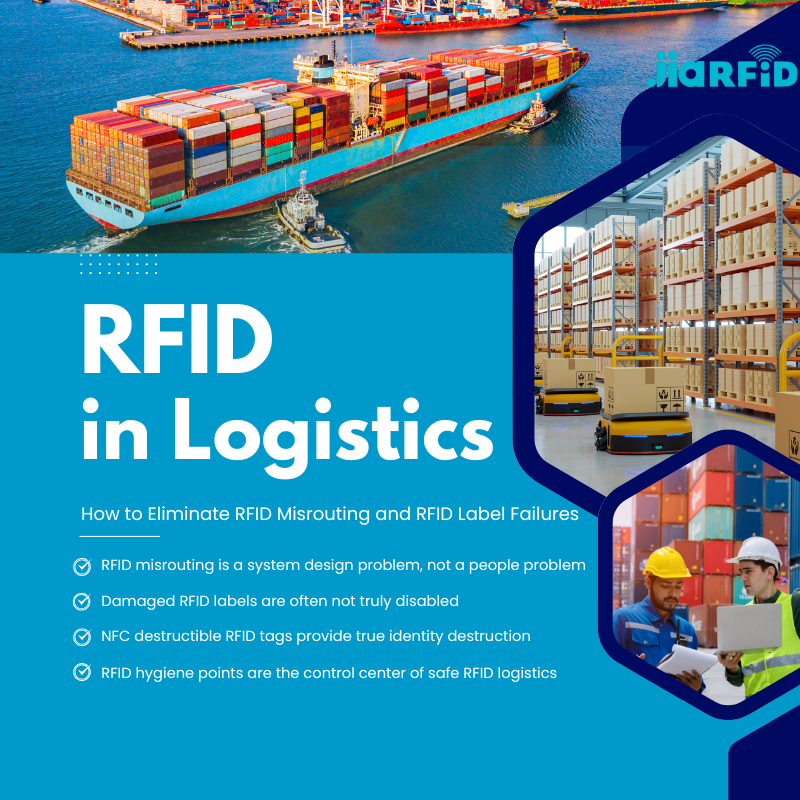
RFID u logistici: Kako ukloniti pogrešno usmjeravanje RFID-a i kvarove RFID etiketa
RFID u logistici više je od pukog alata za ubrzanje procesa. Postao je ključni dio načina na koji moderne opskrbne lance funkcioniraju.

Što je upravljanje otpadom pomoću RFID-a
Zamislite grad u kojem svaki kanti za smeće govori — ne doslovno — nego putem malog čipa koji sustavu javlja kada je pun, kada je ispraznjen i kamo je odvezen. To je ono što RFID upravljanje otpadom danas radi.

Što su Bolt Seals i njihove primjene? | Potpuni vodič
U globalnoj trgovini i logistici, boltni pečati igraju ključnu ulogu u osiguravanju sigurnosti tereta i usklađenosti. Ovi mali, ali moćni uređaji dizajnirani su za zaključavanje transportnih kontejnera, prikolica i vrata tereta pomoću mehanizma koji otkriva neovlašteni pristup.
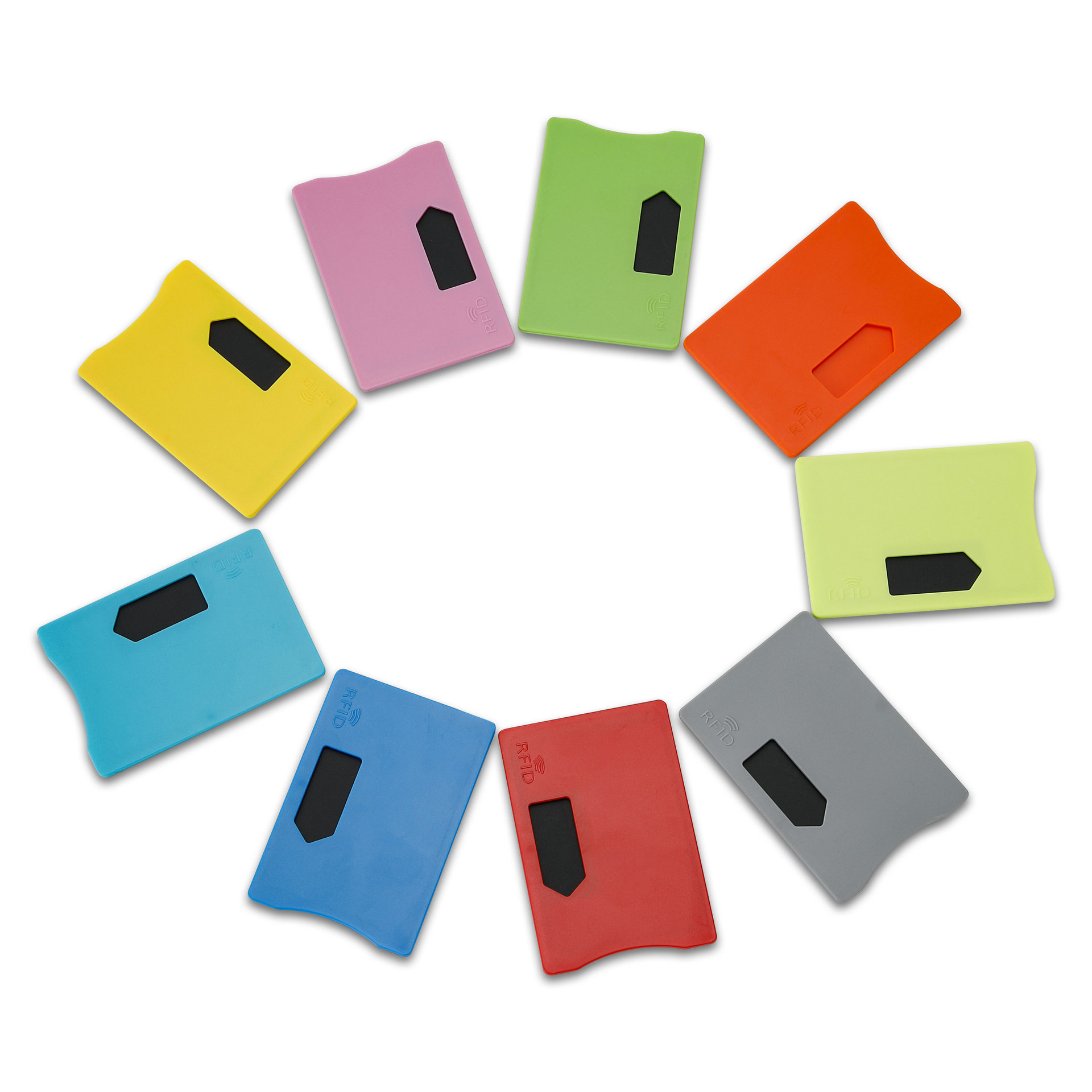
Što je zaštitnik RFID kartice? Prednosti, primjeri upotrebe i vodič za kupnju
RFID tehnologija (radiofrekvencijska identifikacija) prisutna je posvuda: u vašim kreditnim karticama, iskaznicama, prijevoznim karticama, ključevima hotelskih soba i još mnogo toga. Pruža brzinu i praktičnost, ali također otvara vrata novoj vrsti digitalne krađe nazvanoj “skimming”. Tu na scenu stupa zaštitnik RFID kartica.

RFID narukvice za događaje: Vodič za organizatore pri kupnji na veliko
RFID narukvice za događaje postaju omiljeno rješenje za organizatore kojima je potreban brži ulazak, sprječavanje prijevara i beskontaktno plaćanje na koncertima, festivalima i sportskim objektima. Za razliku od papirnatih ulaznica ili QR kodova, ove pametne narukvice koriste ugrađene čipove za pojednostavljenje pristupa, sigurnost transakcija i poboljšanje iskustva gostiju.
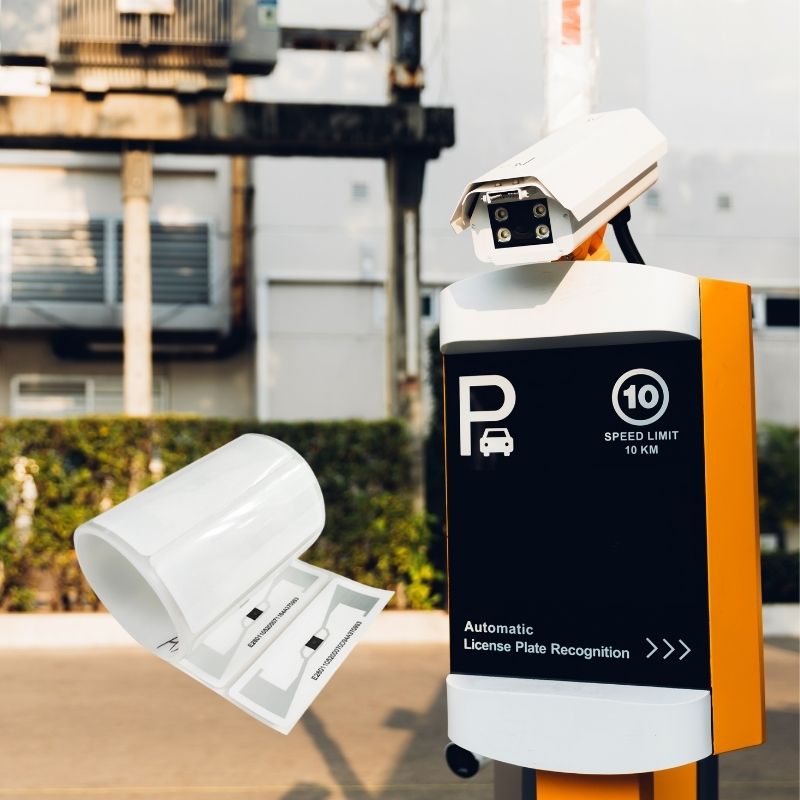
Kako RFID oznaka na vjetrobranskom staklu poboljšava kontrolu pristupa vozilu i sustave naplate cestarina
U današnjem brzom svijetu identifikacija vozila mora biti brza, sigurna i beskontaktna. RFID oznaka na vjetrobranskom staklu pruža upravo to — pouzdan način naplate cestarina, parkiranja i kontroliranog pristupa bez zaustavljanja vozila.
oznake
POVEZANI BLOGOVI

RFID u logistici: Kako ukloniti pogrešno usmjeravanje RFID-a i kvarove RFID etiketa
RFID u logistici više je od pukog alata za ubrzanje procesa. Postao je ključni dio načina na koji moderne opskrbne lance funkcioniraju.

Što je upravljanje otpadom pomoću RFID-a
Zamislite grad u kojem svaki kanti za smeće govori — ne doslovno — nego putem malog čipa koji sustavu javlja kada je pun, kada je ispraznjen i kamo je odvezen. To je ono što RFID upravljanje otpadom danas radi.

Što su Bolt Seals i njihove primjene? | Potpuni vodič
U globalnoj trgovini i logistici, boltni pečati igraju ključnu ulogu u osiguravanju sigurnosti tereta i usklađenosti. Ovi mali, ali moćni uređaji dizajnirani su za zaključavanje transportnih kontejnera, prikolica i vrata tereta pomoću mehanizma koji otkriva neovlašteni pristup.


